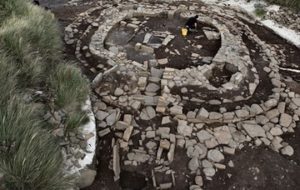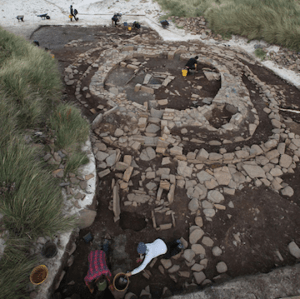
PROCEEDINGS OF THE NATIONAL ACADEMY OF SCIENCES—Despite a wave of migration from continental Europe, local male lineages in the remote Orkney Islands persisted well into the Bronze Age, according to a study. The remote Orkney Islands were a cultural center during the expansion of farming in the Neolithic period. However, Orkney’s architectural trends and practices during the Bronze Age did not reflect styles that flourished elsewhere. Martin Richards, Ceiridwen Edwards, and colleagues analyzed ancient genomes to determine the extent of the islands’ seeming insularity. The authors analyzed 29 DNA samples representing the Neolithic period, Bronze Age, and Iron Age, including 22 Bronze Age DNA samples from the Links of Noltland cemetery, located on the most northwesterly island in the archipelago. Similar to most of Britain, the authors report, Orkney underwent a genetic shift in the Bronze Age, with a Y chromosome lineage appearing from central Europe. However, the predominant Y chromosome in Orkney was I2a1b-M423, even as the chromosome disappeared from Bronze Age Europe. In contrast, mitochondrial DNA, which reflects maternal ancestry, was more similar to other areas of Britain. The results suggest that local male lineages in the remote Orkney Islands persisted well into the Bronze Age, with immigration from continental Europe reflected in the female lineage. According to the authors, the Neolithic lineages may have persisted due to farming households that retained landholdings over time.
____________________________________

The settlement at Links of Noltland extends from the late 4th millennium BC to the mid-1st millennium BC. Over 35 buildings have so far been excavated. This house (Structure 7) was constructed around 2900 BC. Graeme Wilson and Hazel Moore (EASE Archaeology).
____________________________________
Article Source: PNAS news release.
*“Ancient DNA at the edge of the world: Continental immigration and the persistence of Neolithic male lineages in Bronze Age Orkney,” by Katharina Dulias, M. George B. Foody, Pierre Justeau, Ceiridwen J. Edwards, Martin B. Richards, et al., Proceedings of the National Academy of Sciences, 7-Feb-2022. https://www.pnas.org/cgi/doi/10.1073/pnas.2108001119
___________________________________
Advertisement




